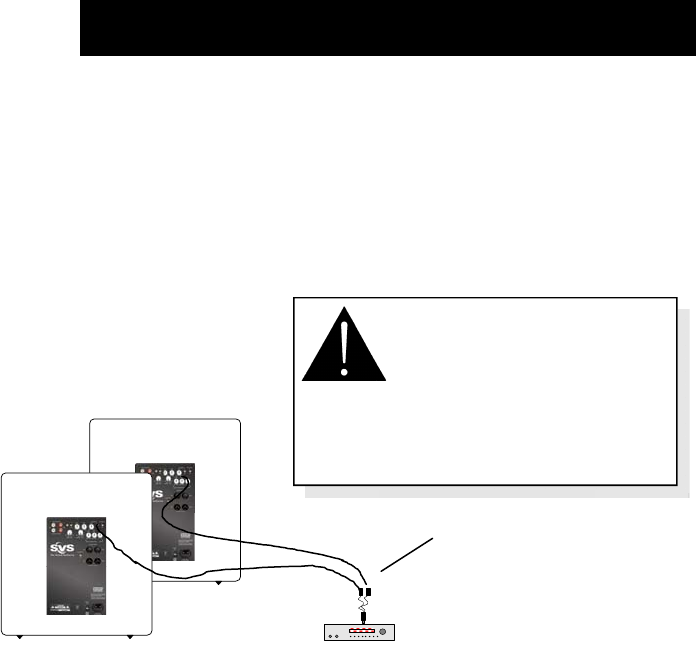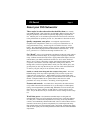
More Setup, calibrating and integration
SV Sound
If you are running a pair of SVS subwoofers (Fig. 2), you will need to use an inex-
pensive “Y” cable adapter (d.) From the “Y” cable you can run a standard 75 Ohm
RCA or XLR signal cable (e.) to each sub, thus “splitting” the Low Frequency Ef-
fects (LFE) and other bass from your receiver, and effectively feeding both subwoof-
ers with the same signal. Alternatively, you can switch off “Hi-Pass” RCA or XLR
output filters and “daisy chain” subs from one’s output to the other’s input. Always
calibrate dual subs one at a time, and adjust phase on one so as to achieve a com-
bined 6dB increase when both are set to the same levels measured individually.
“
Calibration
” isn’t only for tech minded folks, it’s
critical
to a proper con-
figuration of your home theater sound system. Fortunately, adjusting channel
balance (essentially all “calibration” amounts to) is as simple to do as it is
important. The first order of business is making sure your DD/DTS sur-
round sound system is set up properly. We recommend you consult your
audio/video receiver (or processor) manual to refresh on the procedures to
do this. Generally, this requires ensuring the receiver’s test tones, or a spe-
cial test disk (like Ovation Software’s
Avia
) play back at the same volume
from each of your system’s speakers. That’s speakers at left, center, right,
left surround and right surround (and if equipped, center rear speakers), plus
the subwoofer . (More on sub level in a second). Skip to page 9 (“Powered
Box Features”) if you aren’t familiar with your sub’s amp, and come back to
calibration.
Some things to check as you get ready to calibrate:
•
Are your speakers set correct to the correct “size”?
Your receiver/
processor should allow you to indicate if your speakers are “Small” or
Page 7
SV Sound
DD/DTS Processor/Receiver
(Subwoofer “Out”)
Fig. 2
(e.)
(d.)
“Y” cable/splitter from
NOTES: Now is a good time to
select if you want “ON” (always on)
or “AUTO ON” which turns your sub
on only when a bass signal is present.
Power off sub with main switch when changing
connections or moving the sub. High current amp
design requires two minutes of “OFF” time before
sub will resume “ON” status again.


















